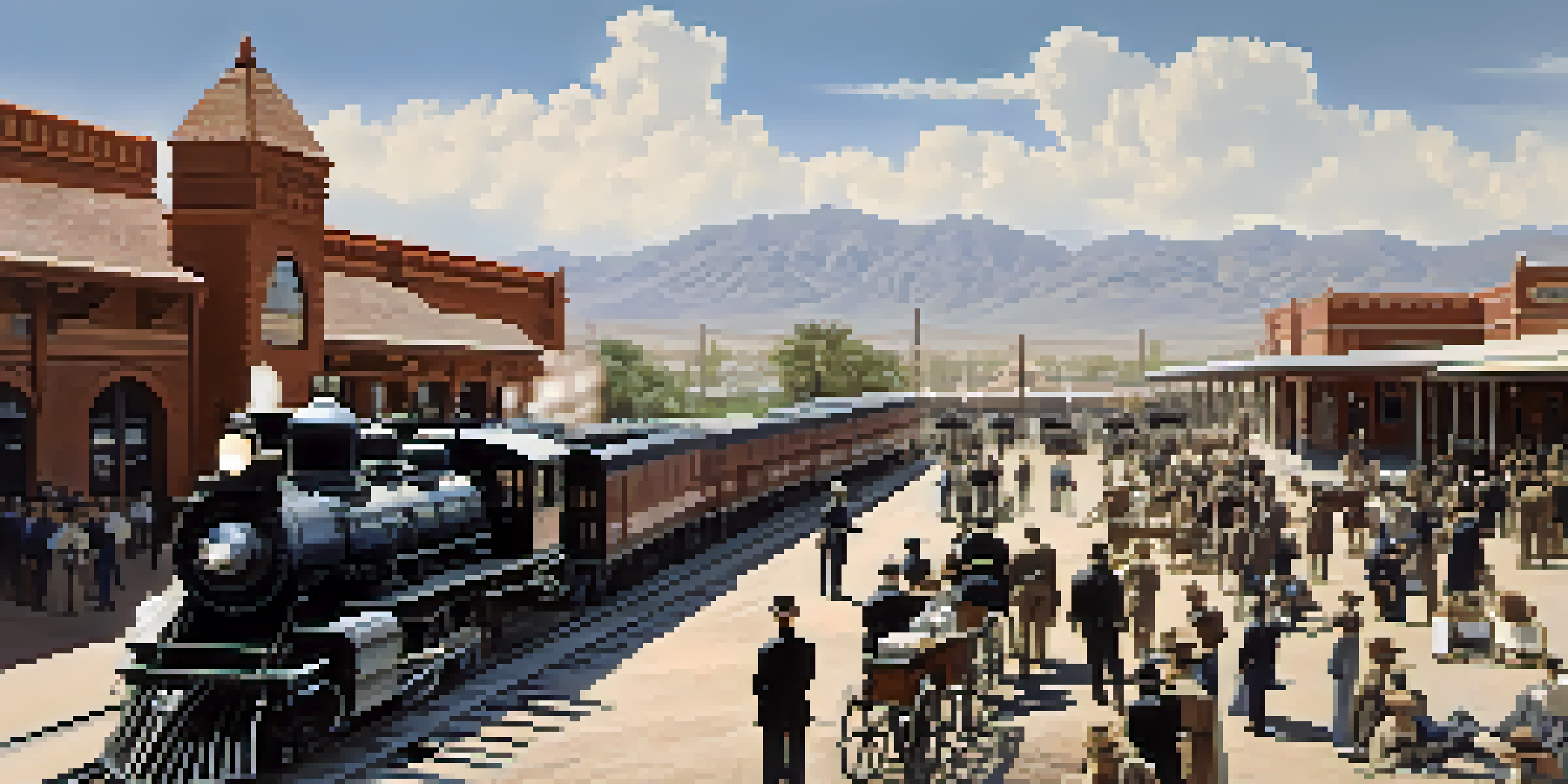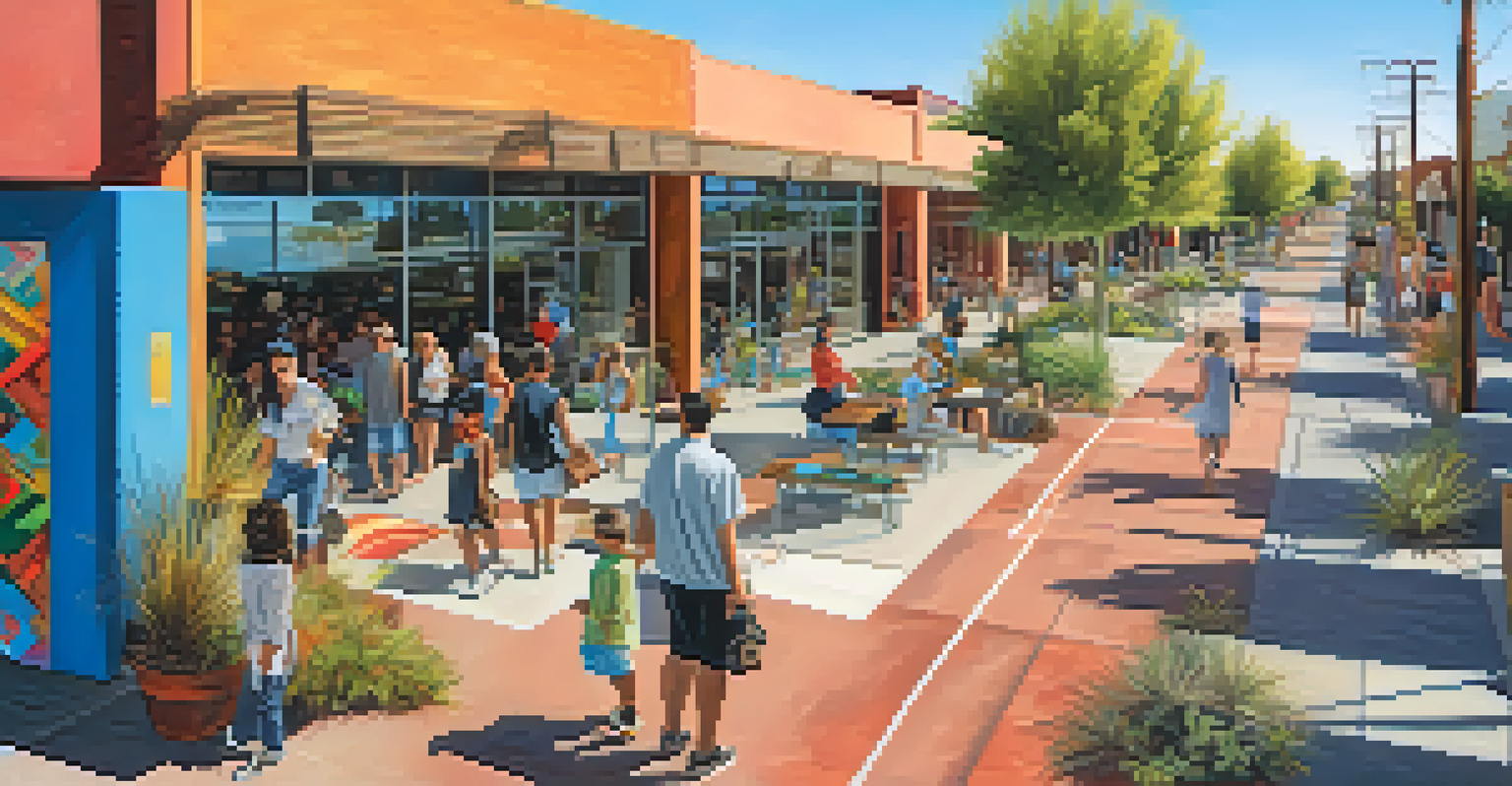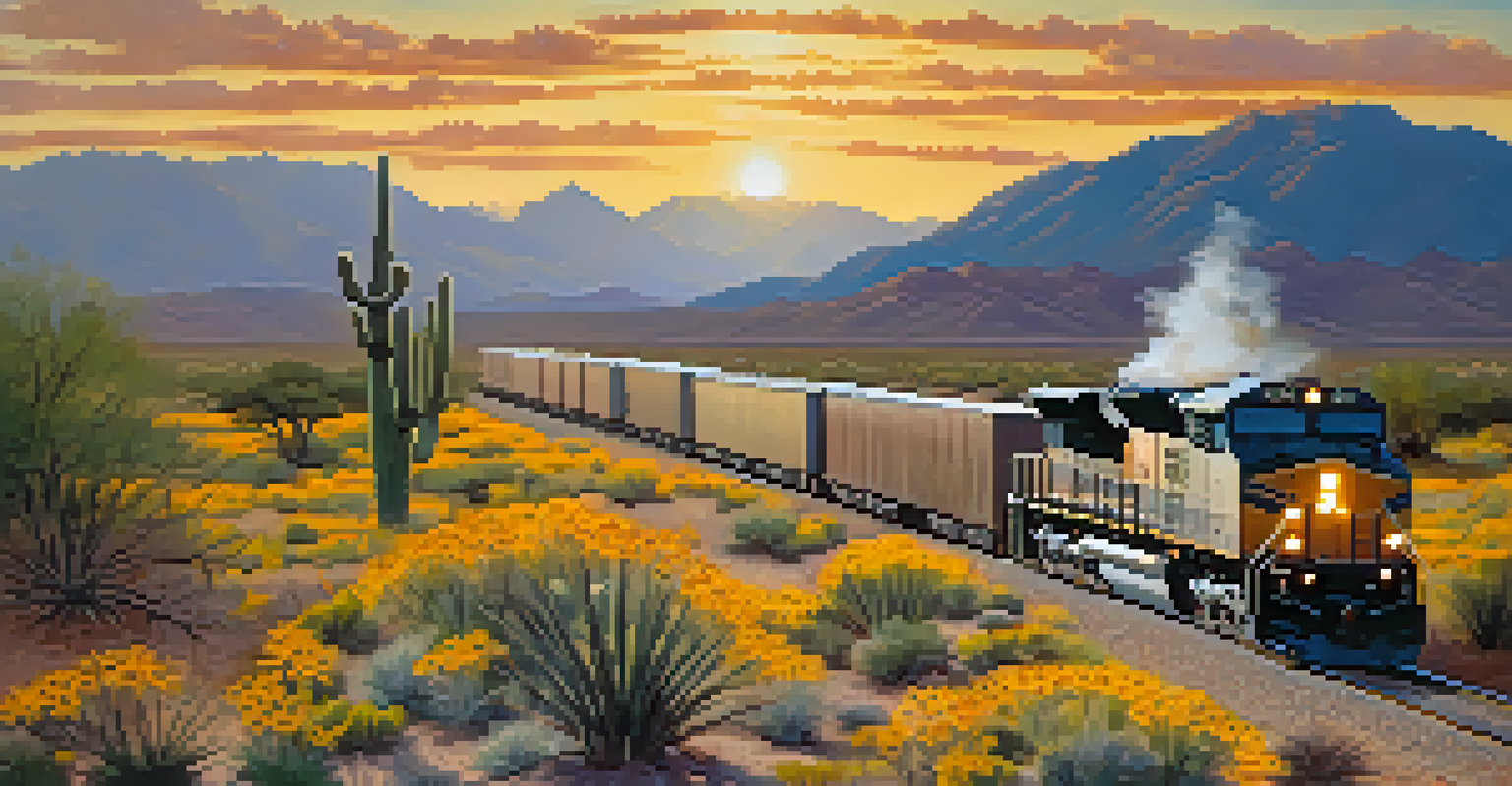The Decline of Tucson's Railroads: Causes and Effects

Historical Significance of Tucson's Railroads
Tucson's railroads once played a pivotal role in the city's development, acting as crucial arteries for trade and transportation. Established in the late 19th century, they facilitated the movement of goods and people, linking Tucson to major markets across the Southwest. This connectivity not only spurred economic growth but also helped shape the cultural landscape of the region.
The railroads are a vital artery of commerce, and their significance in the growth and prosperity of a community can never be overstated.
The Southern Pacific Railroad, in particular, was instrumental in Tucson's rise, providing jobs and fostering a vibrant community. Townspeople relied on the railways for everything from agricultural exports to tourism, creating a bustling environment filled with opportunities. As a result, the railroads became a symbol of progress and prosperity for many Tucsonans.
However, as the 20th century progressed, shifts in transportation methods began to challenge this once-thriving industry. The advent of automobiles and highways changed how goods and people moved, setting the stage for a gradual decline in rail traffic and relevance.
Technological Advancements and Their Impact
The rise of technology has significantly altered the transportation landscape, contributing to the decline of Tucson's railroads. With the increased efficiency and convenience of trucking and air transport, many businesses opted for these alternatives over traditional rail services. This shift not only reduced the volume of goods moving by rail but also diminished the railroads' competitive edge.

Furthermore, advancements in logistics and supply chain management have made it easier for companies to forego rail transport altogether. Businesses now prioritize speed and flexibility, often finding that trucks can meet their needs more effectively. As a result, railroads struggled to adapt to these changes, leading to decreased investments and infrastructure maintenance.
Railroads Shaped Tucson's Growth
Tucson's railroads were vital for trade and transportation, significantly boosting the city's economy and cultural landscape.
Despite these challenges, some railroads have attempted to modernize their operations. However, the costs associated with upgrading infrastructure and technology have proven daunting, further complicating the situation.
Economic Shifts in Tucson and the Southwest
Tucson's economy has experienced significant transformations over the decades, which have also played a role in the decline of its railroads. The shift from manufacturing to a more service-oriented economy means that fewer goods are being produced and transported by rail. As industries evolve, so too do the transportation needs of businesses, often favoring methods beyond railroads.
Transportation is the backbone of any economy; without it, growth stagnates, and opportunities are lost.
Additionally, the economic downturns and recessions have resulted in reduced freight volumes, affecting the profitability of rail services. When businesses struggle, they often cut costs associated with transportation, leading to a decreased reliance on railways. This cycle of economic downturns and reduced reliance on rail transportation creates a challenging environment for the industry.
Moreover, the diversification of Tucson's economy into technology and tourism presents both challenges and opportunities. While these sectors may not rely heavily on rail transport, they do offer potential new avenues for railroads to explore, should they adapt their services accordingly.
Urban Development and Land Use Changes
As Tucson has grown, urban development has transformed the landscape, leading to changes in land use that affect the railroads. Increased residential and commercial developments have encroached upon traditional railroad corridors, making it more difficult for trains to operate efficiently. This urban sprawl has often prioritized roadways over railways, further diminishing the railroads' significance.
In some cases, former railway lines have been repurposed for pedestrian and cycling paths, reflecting a shift in community priorities. While this revitalization of space promotes healthy living, it simultaneously signals a reduced reliance on rail transport. The community’s focus on accessibility and walkability may continue to overshadow the needs of traditional rail services.
Technological Changes Impact Rail Use
The rise of trucking and air transport has diminished the competitiveness of Tucson's railroads, leading to a decline in rail traffic.
However, this shift also presents opportunities for collaboration. By integrating rail services into urban planning, Tucson could revitalize its railroads while promoting sustainable transportation options.
Environmental Factors Influencing Rail Decline
Environmental concerns have increasingly influenced transportation decisions in recent years, contributing to the decline of Tucson's railroads. As climate change becomes a pressing issue, many businesses and individuals are seeking greener alternatives to traditional freight and transport methods. Railroads, often seen as more environmentally friendly compared to trucks, face heightened expectations to demonstrate their sustainability efforts.
This growing focus on sustainability can create a paradox for railroads; while they may be more efficient, they still require significant energy and resources to operate. As businesses and consumers prioritize eco-friendly options, railroads must adapt to meet these changing expectations or risk being sidelined in favor of greener alternatives.
Moreover, extreme weather events, such as floods and droughts, can disrupt rail operations and impact service reliability. These environmental factors not only pose immediate challenges but also necessitate long-term planning and adaptation by rail operators.
The Role of Government Policies and Funding
Government policies and funding have a significant impact on the viability of railroads in Tucson. The prioritization of highway funding over rail infrastructure has historically left railroads at a disadvantage. As federal and state budgets allocate resources to highways, railroads often struggle to secure necessary funding for maintenance and upgrades.
In recent years, there has been a renewed interest in promoting rail transport as part of sustainable transit initiatives. However, translating this interest into effective policy and funding has proven challenging. The competition for transportation dollars often leaves rail projects scrambling for support amidst a myriad of transportation needs.
Urban Development Affects Railroads
As Tucson expands, urban development is repurposing former railway corridors, making it harder for railroads to operate efficiently.
As a result, the lack of investment can lead to deteriorating infrastructure and decreased service quality, prompting businesses to seek alternative transportation methods. Thus, the interplay between government policy and railroad viability remains a critical factor in Tucson's transportation landscape.
Community Impact and Future Outlook
The decline of Tucson's railroads has far-reaching implications for the community, affecting everything from local economies to job opportunities. As rail services diminish, the loss of freight transport can hinder local businesses that rely on these means for their operations. This decline may also result in increased transportation costs, ultimately impacting consumers.
Moreover, the community's perception of railroads is shifting as modern transportation methods become more dominant. The cultural significance once attached to rail services may be fading, leading to a reduced push for preservation and innovation within the industry. As younger generations prioritize different forms of transport, the historic connection to railroads may weaken.

Looking ahead, Tucson has the chance to redefine its relationship with railroads. By embracing innovative solutions and fostering collaboration among stakeholders, there is potential for a renaissance in rail transport, transforming it into a viable and essential part of the city's future transportation network.